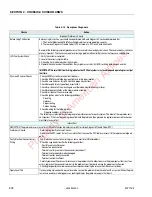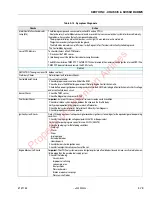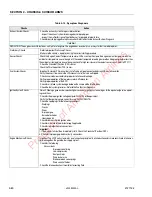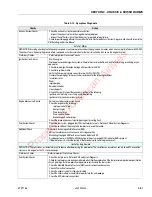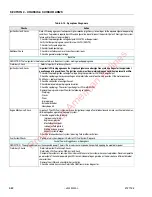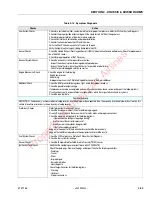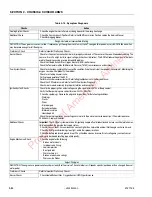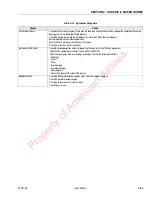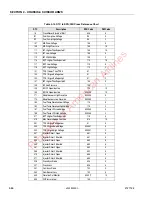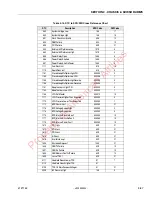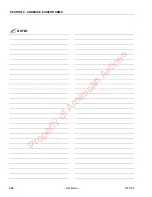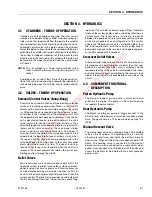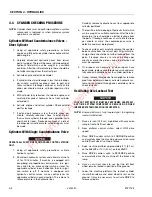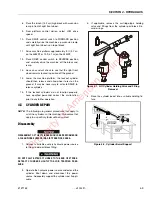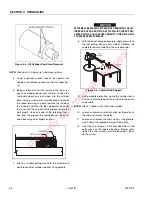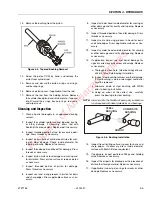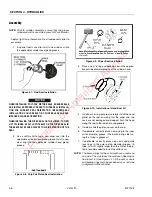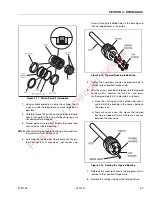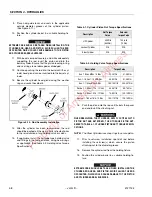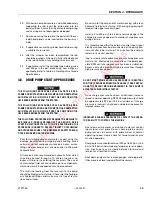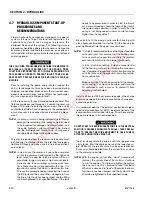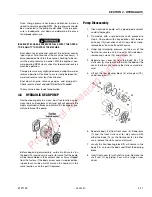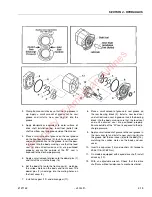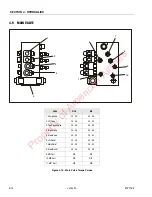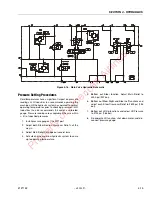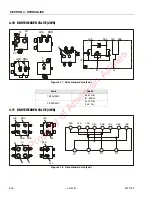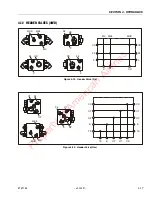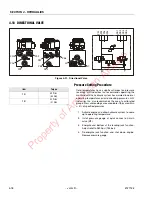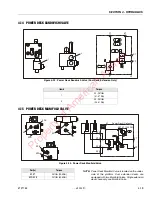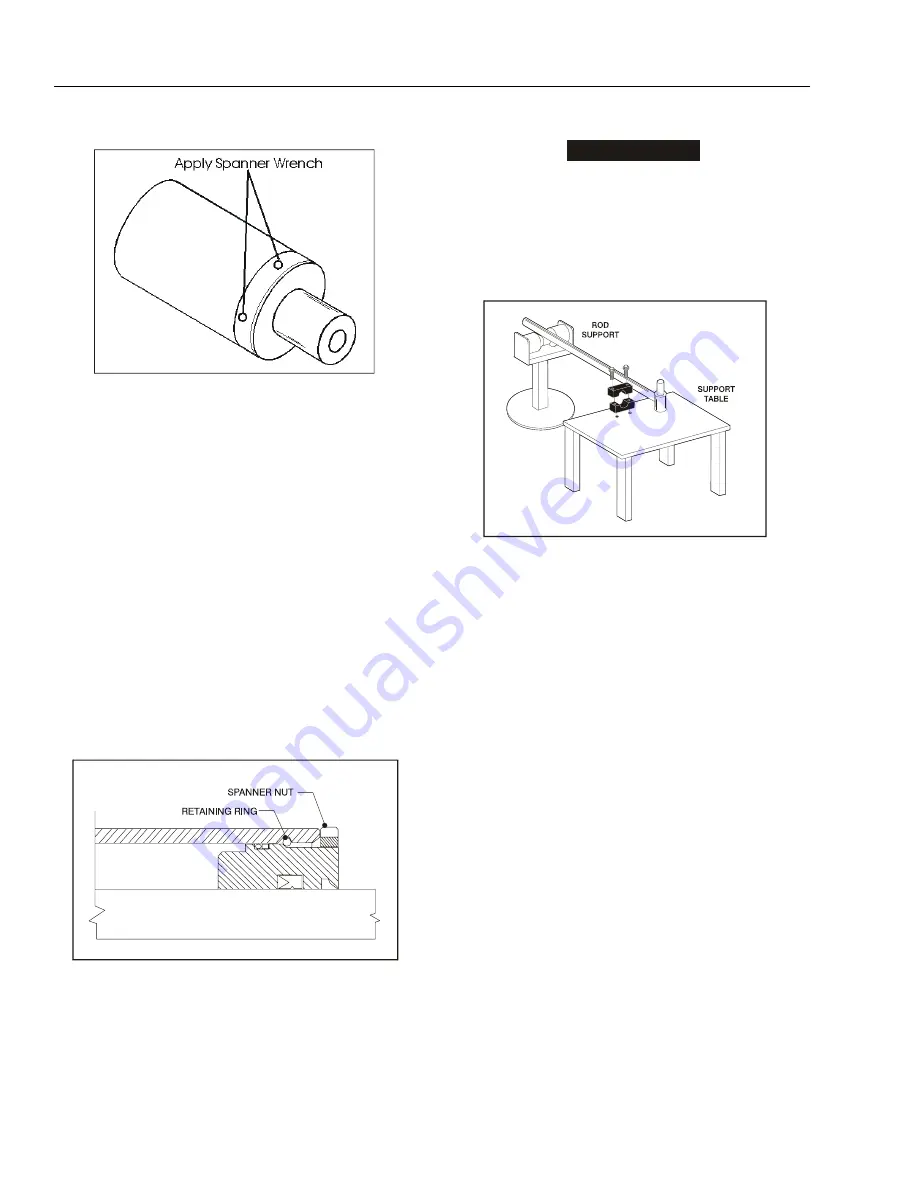
SECTION 4 - HYDRAULICS
4-4
– JLG Lift –
3121133
.
NOTE:
Steps 6 and 7 apply only to the steer cylinder.
5.
Using a spanner wrench, loosen the spanner nut
retainer, and remove spanner nut from cylinder bar-
rel.
6.
Being careful not to mar the surface of the rod, use a
punch or wooden dowel and hammer to drive the
rod guide about one inch down into the cylinder
bore. Using a screw driver, carefully push one end of
the round retaining ring back towards the inside of
the cylinder and then slip the screwdriver tip under
that end. Pull the ring out of the groove toward the
wall mouth. Once one end of the retaining ring is
free from the groove, the remainder can be easily
pried free using ones fingers or pliers.
7.
Attach a suitable pulling device to the cylinder rod
port block end or cylinder rod end, as applicable.
NOTICE
EXTREME CARE SHOULD BE TAKEN WHEN REMOVING THE CYL-
INDER ROD, HEAD, AND PISTON. AVOID PULLING THE ROD OFF-
CENTER, WHICH COULD CAUSE DAMAGE TO THE PISTON AND
CYLINDER BARREL SURFACES.
8.
With the barrel clamped securely, apply pressure to
the rod pulling device and carefully withdraw the
complete rod assembly from the cylinder barrel.
9.
Using suitable protection, clamp the cylinder rod in
a vise or similar holding fixture as close to the piston
as possible.
NOTE:
Step 11 applies only to the steer cylinder.
10.
Loosen and remove nut which attaches the piston to
the rod, and remove the piston.
11.
Loosen and remove the cap screw(s), if applicable,
which attach the tapered bushing to the piston.
12.
Insert the cap screw(s) in the threaded holes in the
outer piece of the tapered bushing. Progressively
tighten the cap screw(s) until the bushing is loose
on the piston.
Figure 4-3. Lift Cylinder Cap Screw Removal
Figure 4-4. Cylinder Rod Support
Property of American Airlines

